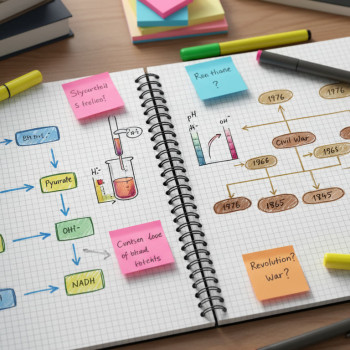Harvey Mudd: Why AP and a Rigorous Foundation Matter
If you or your child are dreaming about Harvey Mudd College — a small, fiercely intellectual STEM-focused liberal arts college — you’re probably asking: how should I approach AP courses, especially in math and physics, to be ready for the academic rigor there? This post is written for students and parents who want a clear, humane, and practical path toward success. Expect candid advice, realistic examples, and strategic choices that respect both college expectations and the student’s well-being.

Understanding the Landscape: What “Rigorous” Really Means
“Rigorous” isn’t an Amazon-review stamp: it’s a day-to-day reality. For a place like Harvey Mudd, rigorous math and physics means:
- courses that push conceptual depth, not just procedural fluency;
- homework and labs that require original thinking and multiple problem-solving strategies;
- fast pacing — topics are covered quickly and revisited in more advanced contexts;
- collaborative but high-accountability environments where peers are strong and expectations are high.
AP classes can be a bridge to that world — but they’re not the whole bridge. They give structure, standards, and the opportunity to demonstrate mastery on a national scale. However, preparing for Harvey Mudd also means developing habits: translating problem statements to mathematical form, tolerating productive struggle, writing clean proofs, and connecting theory to experiment.
Which APs Should You Prioritize?
Not every AP is equally helpful for every student aiming for a top STEM college. Focus on depth in core quantitative APs, while using complementary APs to show breadth.
Core APs for Math- and Physics-Focused Applicants
- AP Calculus BC — the strongest single indicator of calculus readiness. It covers single-variable calculus comprehensively and signals you can handle college-level analysis pace and technique.
- AP Physics C: Mechanics and Electricity & Magnetism — calculus-based physics is essential. If you can manage both AP Physics C exams, you’ll be much better prepared for college-level mechanics and E&M.
- AP Statistics — while not as central, statistics complements experimental design, data analysis, and computer science work.
Valuable Supporting APs
- AP Computer Science A — programming and algorithmic thinking are central to modern STEM; knowledge here goes far beyond code to shape problem-solving approach.
- AP Chemistry — useful if you’re leaning toward materials, chemical engineering, or interdisciplinary science.
- AP English Language or AP English Literature — strong writing matters. STEM students who write well stand out.
How to Sequence APs Over High School
Build momentum without burning out. The sequence below is a sample plan for a motivated student aiming for a rigorous STEM college. Adjust for individual readiness and school offerings.
| Year | Suggested Courses | Focus |
|---|---|---|
| 9th Grade | Honors Algebra II/Trig or Geometry; Honors Physics or foundational science | Build algebraic fluency, scientific curiosity, study habits |
| 10th Grade | Precalculus / Honors Precalculus; AP Chemistry or AP Physics 1 (if ready) | Transition to formal proofs and deeper lab skills |
| 11th Grade | AP Calculus AB or BC; AP Physics C course prep or AP Physics 2; AP Computer Science A | Major quantitative jump; focus on calculus and calculus-based physics |
| 12th Grade | AP Calculus BC (if not taken); AP Physics C exams; Advanced electives (linear algebra, multivariable if available) | Polish mastery; pursue research, math competitions, or independent projects |
Note: Taking AP Calculus BC in junior year is common. If your school offers multivariable calculus or linear algebra as electives, take them senior year — they’re often the most meaningful academic signals for top STEM colleges.
Study Habits and Mindset: Beyond Tests
AP exams are checkpoints; they don’t capture everything that matters. Harvey Mudd—and many top STEM colleges—value how students think. Cultivate these habits:
- Active problem solving: work problems before reading the solution. Treat wrong answers as data, not failure.
- Conceptual explanations: practice explaining results aloud or on paper — why does a method work? What assumptions are hidden?
- Write like a scientist: structure solutions, define variables, and check units. Clear communication sets top students apart.
- Project-based learning: design small projects or experiments that connect theory to practice — a sensor-based lab, a modeling project, or a programming simulation.
- Build stamina: work on problems for sustained blocks (60–90 minutes) to mirror college coursework intensity.
Time Management — Realistic Weekly Template
Below is a practical weekly template for a student juggling AP Calculus BC, AP Physics, and other courses. Tailor hours to your course load and outside commitments.
- Daily math practice: 45–75 minutes (problem sets + error review)
- Physics lab/reading: 60–90 minutes (lab reports, derivations, conceptual questions)
- Programming/project time: 2–4 hours/week (develop code, run experiments)
- Weekly review session: 90 minutes (synthesize notes, create one-page concept summaries)
- Rest and non-academic activities: essential for recovery and creativity
AP Exam Strategy: What to Prioritize and How to Practice
For AP Calculus and AP Physics C specifically, smart practice beats endless drilling.
AP Calculus BC
- Master core concepts: limits, derivatives, integrals, series, and differential equations; know when to use each tool.
- Practice multi-step problems that require connecting topics (e.g., optimization + integrals + series).
- Timed practice for multiple-choice; show full solutions for free-response to build clear argumentation.
AP Physics C (Mechanics & E&M)
- Translate physical situations into mathematical models: sketch free-body diagrams, list assumptions, and define coordinate systems.
- Drill problem decomposition: if a problem is complex, break it into kinematic, dynamic, and energy steps.
- Laboratory intuition: understand what experiments prove, how measurement error matters, and how models approximate reality.
Sample Problems and Approaches (Conceptual)
Here are two conceptual prompts that mimic the kind of thinking Harvey Mudd values — not just routine answers but structured reasoning.
Sample Prompt 1: A Calculus Puzzle
Given a function defined piecewise with an integral term, analyze continuity and differentiability at the joining point. The approach matters more than the final number: sketch the function, compute left- and right-hand limits, and check derivative definitions from first principles if needed. This exercise blends limit intuition with algebraic manipulation — exactly the agility sought by rigorous programs.
Sample Prompt 2: A Physics Modeling Question
Model a charged particle in a region of varying electric field. First, write down the equations of motion; second, examine limiting cases (weak and strong field); third, discuss experimental observables. Use dimensional analysis to check your expressions. That kind of layered answer — equations, limiting behavior, experimental tie-ins — is the hallmark of mature problem solving.
How Admissions View APs and Rigor
APs are one signal among many. Admissions officers at top STEM colleges look for:
- course rigor relative to what’s available at your school;
- consistent achievement: strong grades in challenging courses over time;
- evidence of passion and intellectual curiosity — research, competitions, or long-term projects matter;
- quality letters of recommendation that speak to problem-solving, creativity, and work ethic.
For Harvey Mudd applicants, AP scores and honors will help, but the narrative — how you used those courses to grow, what you built, and where you’re headed — often shifts the decision needle more than a single exam score.
Beyond APs: Projects, Research, and Demonstrated Interest
Top STEM programs value students who do more than take tests. Here are high-impact options that signal readiness for an intense math and physics curriculum:
- Independent research or a science fair project with a clear methodology and results;
- Math contests or proof-based problem writing (e.g., local or national competitions);
- Open-source code contributions or a portfolio of computational models;
- Summer research programs or internships (even remote ones) that produce a tangible deliverable.
When documenting these activities on an application, focus on the arc: problem you set out to solve, obstacles, how you overcame them, and what you learned.
Where Personalized Tutoring Helps — And When It Doesn’t
Personalized tutoring can accelerate understanding, especially in subjects where a small conceptual gap cascades into larger struggles. The best tutoring focuses on the student’s misunderstandings, builds tailored study plans, and trains productive habits.
Sparkl’s personalized tutoring, for instance, offers 1-on-1 guidance, tailored study plans, expert tutors, and AI-driven insights — tools that can help identify weak points early, turn frustration into clarity, and keep momentum during busy times like senior year. Used well, tutoring doesn’t replace classroom learning; it amplifies effort and clarifies thinking.
That said, tutoring isn’t a silver bullet. The most important factors remain the student’s intrinsic curiosity, willingness to persist through difficulty, and time spent doing deep, focused work.
Balancing Rigor and Well-Being
Intensity without balance leads to burnout. Here are practical approaches to stay both rigorous and sane:
- Set weekly non-negotiables: exercise, social time, and sleep windows.
- Use a planner to batch similar tasks — math problem sets on one day, lab write-ups on another — to reduce context-switching.
- When overwhelmed, choose high-leverage actions: rework incorrect problems, summarize key concepts, and practice past free-response questions.
- Communicate with teachers early if the workload is unmanageable — they often help prioritize learning goals over busywork.
Realistic Expectations: Scores, Grades, and What They Mean
AP scores are part of the picture. Strong grades in the most challenging courses available to you typically matter more than perfect scores in easier ones. A few points to remember:
- An AP 4 or 5 in Calculus BC or Physics C is a very good sign of readiness; a 3 isn’t a failure, especially if your school’s curriculum is especially tough.
- Consistent A grades in honors and AP math/physics classes show you can handle sustained rigorous work.
- If an AP score doesn’t match your grade, the teacher’s recommendation and your project work can help contextualize that difference.
Sample Senior-Year Plan for the Aspirational STEM Applicant
This plan assumes you’ve already taken strong courses through junior year and want to maximize readiness—and application strength—senior year.
- Enroll in the highest-level math offered (e.g., multivariable or linear algebra) or take a college-level course if available.
- Take or self-study for AP Physics C exams if you haven’t already; focus on lab reasoning and calculus integration.
- Commit to a 6–12 week independent project: research, simulation, or computational model you can describe in your application.
- Schedule regular check-ins with a tutor or mentor for targeted feedback — for example, weekly 1-on-1 sessions on problem-solving and project guidance.
- Prepare application materials that highlight intellectual curiosity: concise descriptions of projects, clear statements of what you learned, and recommendations that speak to problem-solving temperament.
Table: Quick Comparison — AP Pathways and Outcomes
| AP Pathway | What It Shows | Best For |
|---|---|---|
| AP Calculus BC + AP Physics C | Readiness for rigorous calculus-based engineering and physics | Students targeting physics, engineering, or applied math |
| AP Calculus AB + AP Physics 1/2 | Solid foundation; shows competence but less depth in calculus-based physics | Students building toward STEM but with less advanced course availability |
| AP Computer Science A + AP Statistics | Computational thinking and data literacy | Students leaning toward CS, data science, or interdisciplinary STEM |
Final Thoughts: A Strategy that Balances Ambition and Growth
Harvey Mudd’s environment rewards intellectual curiosity, resilience, and the ability to connect theory to practice. AP courses are powerful stepping stones when chosen and used intentionally: prioritize calculus and calculus-based physics, supplement with programming, and back everything with projects that show initiative.
Remember: quality beats quantity. A carefully executed independent project, a clear academic narrative, and consistent mastery of the most relevant APs will speak louder than an overly ambitious but shallow AP list. If you want targeted help—whether it’s refining your problem-solving technique, building a tailored study plan, or navigating senior-year course choices—personalized tutoring like Sparkl’s can provide the 1-on-1 guidance, tailored study plans, expert tutors, and AI-driven insights to make efficient progress.
Above all, keep the joy of discovery in the center. Rigor means hard work, yes, but the best learning happens when challenge meets curiosity. You (and your family) can build readiness for Harvey Mudd by choosing the right courses, practicing deliberately, and documenting a genuine intellectual journey.

Quick Checklist for Students and Parents
- Prioritize AP Calculus BC and AP Physics C if available.
- Balance AP rigor with well-being: schedule rest and extracurriculars.
- Develop problem-solution habits: show work, check units, and explain reasoning.
- Pursue one meaningful project that demonstrates depth.
- Use targeted tutoring (like Sparkl’s) for focused skill gaps and application prep.
- Frame your application around growth, curiosity, and concrete outcomes.
A Final Encouragement
Applying to a place like Harvey Mudd is a bold goal. It doesn’t require perfection — it requires steady, curious work and the willingness to learn from mistakes. With thoughtful AP choices, deliberate habits, and the right supports, you can build the academic and personal stamina that not only gains admission but helps you thrive once you get there.
Good luck — and enjoy the work. The problems that stretch you most often become the ones you remember years later, not because they were easy, but because they taught you how to think.



















No Comments
Leave a comment Cancel